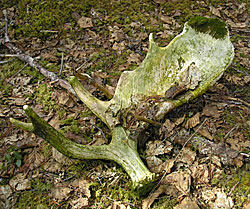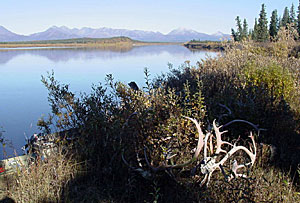Seasonal snowmachine closures for parts of the
Chugach National Forest are in effect beginning May 1
st.
The normal closure date of the Forest for over the snow vehicles is May
1, however, due to above average snow depth the following areas will
remain open:
Turnagain Pass from Bertha campground NORTH to where the power line
crosses the
Seward highway at approximately Mile Marker 74 can remain
OPEN to allow access from the motorized lot, to the up-track, and into the Seattle Ridge area.
-
NOTE: Turnagain Pass from Bertha campground SOUTH, including Johnson Pass is CLOSED
Most winter-motorized areas on the Seward Ranger District remain open. See below for trail conditions and recommendations.
-
Motorized travel in the following areas is currently good: Carter
Lake, Lost Lake via Primrose or Seward Trailheads, Resurrection North
(road to the trailhead has been plowed), and Palmer Creek.
-
Travel is not recommended to Lost Lake via the Snug Harbor Rd. Chugach
Electric has plowed the road one-mile beyond the winter parking area
and the road is blocked with a large dozer blade. This mile of plowed
road is down to gravel and there is no snow.
-
Travel is not recommended by snowmobile on West Juneau Road or
Slaughter/Bean Creek for access to Resurrection South due to road
plowing activities.
-
Travel is not recommended by snowmobile up the South Fork of Snow River due to the amount of open water.
-
Travel is not recommended by snowmobile on Trail Lake.
We will measure snow depths weekly. When conditions deteriorate to
the point of resource damage, areas will be closed to motorized travel.
Areas may close with little notice, so check our website at
www.fs.usda.gov/chugach or follow us on twitter @ChugachForestAK or
www.cnfaic.org for the latest information.
Recreationists should be aware of weather and snow conditions before
they go into the backcountry. Using the backcountry involves risk
anytime of the year. Avalanche conditions may exist even in the summer.
Take a look at the Chugach National Forest Avalanche Information Center
website at
www.cnfaic.org for “Springtime Avalanche Tips.”
If you are going into the backcountry, tell someone where you are going
and when you plan to return. Travel in a group rather than alone. Be
prepared to survive an emergency situation. All backcountry users need
to know their skill level and use common sense and discretion.
For more information visit
www.fs.fed.us/r10/chugach or call one of our offices: Anchorage 743-9572; Cordova 424-7661; Girdwood 783-3242; or Seward 224-3374.
Violations of motorized closures may result in a fine.








 Securing the services of a guide might seem expensive, but the chances of a successful and enjoyable hunt are higher. Hunters who lack precise knowledge of game distribution, access points, and Alaska geography, yet attempt to put together hunts themselves may face frustration, danger, and disappointment. For example, only a relatively small proportion of the out-of-state hunters who stay on the road system to save money will successfully harvest a moose.
Securing the services of a guide might seem expensive, but the chances of a successful and enjoyable hunt are higher. Hunters who lack precise knowledge of game distribution, access points, and Alaska geography, yet attempt to put together hunts themselves may face frustration, danger, and disappointment. For example, only a relatively small proportion of the out-of-state hunters who stay on the road system to save money will successfully harvest a moose.
 Most Alaska hunting seasons begin in August and September and end by October. Seasons in some areas continue into the winter months. In locations where certain animal populations are large enough and local subsistence needs are being met, hunting for some species may be permitted all year. Bears may be taken in either fall or spring in some locations.
Most Alaska hunting seasons begin in August and September and end by October. Seasons in some areas continue into the winter months. In locations where certain animal populations are large enough and local subsistence needs are being met, hunting for some species may be permitted all year. Bears may be taken in either fall or spring in some locations.






